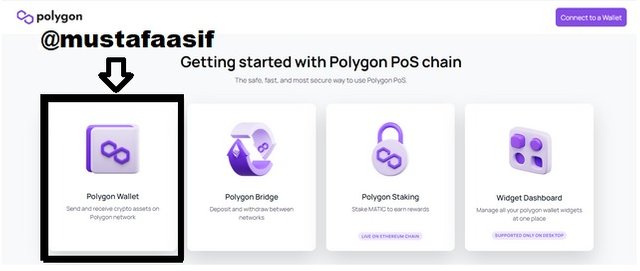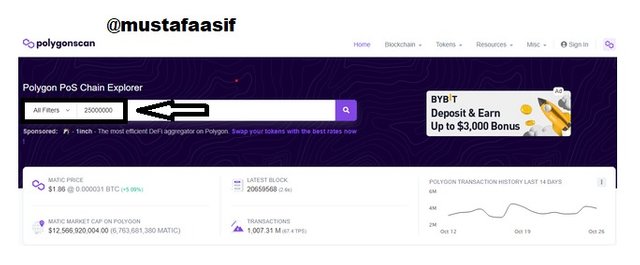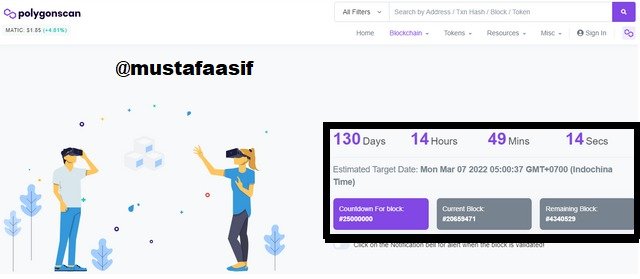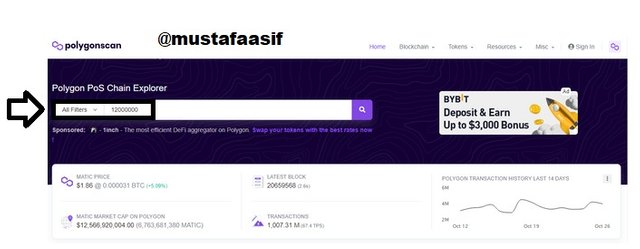Sidechains - Crypto Academy | S4W8 - Homework post for pelon53.
Hello, friends, and welcome to Professor @pelon53's assigned task. In this assignment, I will go through Sidechains and Polygon Chains in depth. I hope you had a good time in class.

Question 1
Explain in detail the sidechains with the use of ZK-Rollups.
Sidechain is viewed as an add-on that functions independently or as a separate blockchain that connects to the parent blockchain, also known as the mainchain. To use the side chain, an off-chain operation that can transfer data between the parent blockchain and the sidechain must be in place.
This off-chain allows assets and data to be transferred between the two blockchains in the form of events or smart contracts. To use the side chain to transfer tokens, a user on the parent blockchain sends the token to an output address produced by the off-chain, after which the token is locked and cannot be used anywhere else.
Once the transaction is complete, the user on the opposite blockchain receives confirmation, which is used to verify the transaction's authenticity. The smart contract on the opposite blockchain will release as well as send payments to the user whose token is locked, and the token will be available for use after validity is confirmed. This method can be used on both the main blockchain and the secondary chain.
Z-K rollups, also known as Zero knowledge rollups, are a layer 2 solution that was created to make transactions beyond the layer 1 blockchain (Ethereum blockchain), as well as consistently enforced on layer 1 and create a smart service agreement on layer 1 that is used to enforce transfers that are accurate and can be executed on layer 2 using the information from the layer 1 transaction.
The side chain, as well as ZK Roll-up, were implemented in order to alleviate the Ethereum blockchain's congestion problem.
ZK Roll-up is one of the scalability options, in which several transactions are bundled into a single transaction and money are held by a smart contract on the main chain. To prove the legitimacy of a transfer, they use validity proofs such as STARKS or SNARKS, as well as complicated mathematics.
In its blockchain, ZK Roll-up makes use of those re-layers and transistors, with both users accountable for different tasks. The re-layers are in charge of producing SNARK proofs, which are hashes that prove the difference between the past and present state of the blockchain.
The re-layers are also in charge of accumulating a large number of transfers in order to build a Roll-up. To become a re-layer, a user must invest the amount specified in the smart contract in order to create a bond. A re-layer will be unable to prevent a Roll-up or tamper with the staked bond.
Transactors, on the other hand, are in charge of both creating and broadcasting transfers to the network. A indexed "to and for" address, network fee, once and the value to be transacted are among the data contained in the transfers. A brief 3byte address that is indexed is employed to achieve a cheap processing price. Smart contracts are in charge of storing data in two Merkel trees, one of which contains the address and the other has the amount to be sent.
Transactions are computed in batches with Zk-Rollups, which is normally done off-chain, and then sent to the Ethereum blockchain to be confirmed. A series of transactions is confirmed and added to the process from the initial with just one legitimate transaction.

Question 2
Explain the Liquid Network sidechains
The Liquid network is based on the bitcoin blockchain and allows for rapid, safe, and confidential bitcoin transactions as well as asset transfers. The Liquid Network is a bitcoin side chain that facilitates the transfer of tokens from the main chain via a two-way peg. It's worth noting that the number of bitcoin in circulation is equal to the amount of bitcoin locked in the mainchain, implying that they're pegged at 1:1. Liquid Bitcoins, which are bitcoins that have been transferred to the liquid network, are used.
When users use the private transactions function, the liquid network has two distinct features: private transactions and the production of digital currencies. With private transactions, there is secrecy in the amount of transactions carried out. Because the liquid network platform allows anybody to observe the whole number of transactions, the PT helps to disguise the total amount of transactions.
Users can use the tools offered by the liquid network to develop their own digital collectibles, security tokens, alt coins, fiat, and other digital currencies. Although all of these can be made, the liquid network cannot ensure that the assets created will be verified.
Liquid network also employs Blockstream's strong federation concept, which was first proposed in 2017. Because this side chain network exists on its own, users are responsible for its security. After waiting for the 102 confirmation on the bitcoin network, a bitcoin holder or user can transmit their BTC to an output address, and the functionaries in charge of guarding and securing the federation's bitcoin lock up the coin so that it cannot be used anywhere else,
The use of Liquid BTC is permitted, and after two confirmations on the liquid chain have been confirmed, the procedure of pegging out is permitted on the parent chain.

Question 3
Describe the steps to connect the metamask wallet and the polygon network wallet. Show screenshots.
firstly I logged into my metamask account and then went to the homepage's navigation bar.

I choose browser and typed in the polygon wallet's URL.

After it had loaded, I went to Metamask.

As you can see in the screenshot below, I clicked on connect.

As you can see, I signed in as shown below.


- Both wallets are linked together.


question 4
According to the polygonscan block explorer, when will the block 25.000.000 be generated? Explore the 12.000.000 block, at that time, what was the price of the Matic?
- To identify the block, I go to https://polygonscan.com/ and type 25.000.000 in the search field, as seen below.

- As seen below, the block 25.000.000 will be generated on Monday, March 07, 2022 at 05:00:37 GMT+0700, which is 130 days, 14 hours 49 minutes 14 seconds in the future.

- I typed 12.000.000 into the search bar on the main page, as shown below.

- The block 12.000.000 was generated on March 14, 2021 at 09:35:48 AM +UTC, or 226 days 21 hours ago, and the price of Matic is $0.38, according to the data.


Conclusion
The introduction of Sidechain in the cryptocurrency world is extremely beneficial, as it aids major blockchains, particularly Ethereum, in overcoming scalability, performance, and transaction fee issues. Because it is able to overcome this problem by combining or rolling numerous transactions into one transaction, the use of ZK-Rollups is very useful and has a good impact. Liquid Network is one example of a successful sidechain of the main Bitcoin blockchain for traders. Every trader can rely on it to make BTC and L-BTC transactions swiftly and securely in the cryptocurrency market, thanks to its operations and characteristics.
#pelon53-s4week8 #cryptoacademy #club5050 #sidechain #polygon #steemit
@steemcurator02
@steemcurator01
@steemcurator02
#club5050 😀